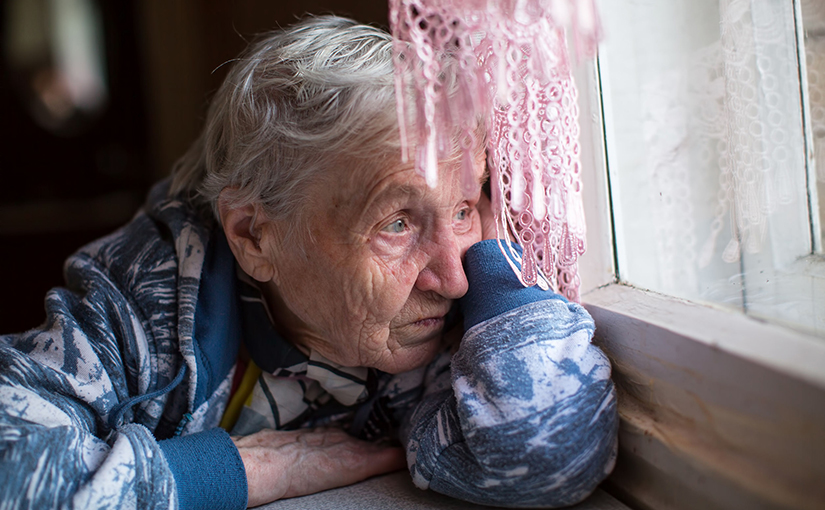by Lavina E. Tomer, Southern Arizona Senior Pride
»Download PDF
LGBTQI+ people may experience loss with unique intensity. Why? This article was used as a hand-out in a presentation to hospice bereavement counselors and chaplains.
Studies, professional experience and personal reports indicate that: isolation, disclosure of identity and acknowledgment of relationships, life experiences that include bullying, violence, living with secrets, and fear of living an open, authentic life influence this community’s bereavement process. Being a member of a minority community that is marginalized, neglected, and hated must also be examined. All of these factors may increase the risk of heightened or prolonged bereavement, depression, compounded grief and disenfranchised grief. Fear of seeking professional help and bereavement support remain as barriers.
The current generation of older LGBTQI+ people has lived through being: considered mentally ill, illegal, a criminal, an abomination, rejected by family, friends, faith communities, healthcare providers, and co-workers, fired from jobs, isolated and alone when coping with losses, addicted to alcohol and drugs, “closeted,” targeted for raids, harassment, arrests and murders, alive through the AIDS crisis of the 80s, and survivors of suicides and murders. Resilient and burned -out are two adjectives that come to mind.
Statistics about LGBTQI+ Youth at school:
Negative attitudes and cultural stigmas put LGBTQI+ youth at higher risk for bullying, teasing, and physical violence than their heterosexual and cisgender peers. The Gay, Lesbian & Straight Network (GLSEN) released a report in 2013 on LGBTQI+ youth that states:
* Fifty-five percent of LGBTQI+ youth feel unsafe at school because of their sexual orientation and 37% feel unsafe because of their gender expression.
* Seventy Four percent of youth were verbally abused because of their sexual orientation and 55 % were verbally harassed because of their gender expression.
* Sixteen percent were physically assaulted, either punched, kicked, or injured with a weapon because of their sexual orientation and 11 % of them experienced the same type of assaults because of their gender expression.
Statistics also report that LGBTQI+ youth are at a significantly higher risk for suicide and that 40% of homeless youth are LGBTQI+.
All LGBTQI+ people are currently living some of the same experiences. Barriers for the LGBTQI+ community when grieving the loss of partner, spouse, friends or chosen family persist.
Recommendations for Solutions
1. Examine your own prejudices and be open to changing assumptions, attitudes, and approaches.
2. Use inclusive language: gender neutral pronouns: they, partner, spouse.
3. Ask open-ended questions: Are you currently in a relationship? What people are important to you? Is there someone you would like to have involved in your care?
4. Create a LGBTQI+ friendly pronouns: they, partner, spouse.
3. Ask open-ended questions: Are you currently in a relationship? What people are important to you? Is there someone you would like to have involved in your care?
4. Create a LGBTQI+ friendly environment: have magazines, posters and literature that are LGBTQI+ centered in the lobby, include your anti-discrimination clause (which includes sexual orientation and gender identity)
prominently on brochures, posters, website, information packets), include pictures in promotional literature and on-line, when introducing your agency or group guidelines point out policies for clients and employees about bullying, harassment, and exclusion, affirm participants’ rights, have books and movies about and for the LGBTQI+ community in your library.
5. Engage Project Visibility for an all agency training, including volunteers.
6. Research and have available local and national resources that serve the LGBTQI+ community.
7. Acknowledge the need for careful and sensitive exploration of the relationship lost and the bereaved individual’s identity, including the degree to which the relationship was disclosed and acknowledged in life.
8. Think about alternative sources of support: Chosen family and friends, former partners, the broader LGBTQ+ community, LGBTQI+ centered and welcoming agencies and organizations.
9. Be mindful of additional, concurrent stressors in bereavement.
10. Recognize social factors that may lead to disenfranchised grief: deceased may have had a traumatic death, the relationship with the deceased was not acknowledged or publicly recognized, community of friends or family not able or willing to allow grief process, limited access to support.
11. Be aware that LGBTQI+ people continue to report discrimination from healthcare providers and fear discrimination in bereavement.
12. Be visible as a welcoming agency, bereavement specialist or counselor in all ways possible. Have LGBTQI+ welcoming on flyers, website, Facebook. Engage, assist, refer. Open your doors.
Fostering an environment of acceptance, recognition, and support, working closely with community groups, and seeking out training and education are key to delivering individualized, holistic care.




